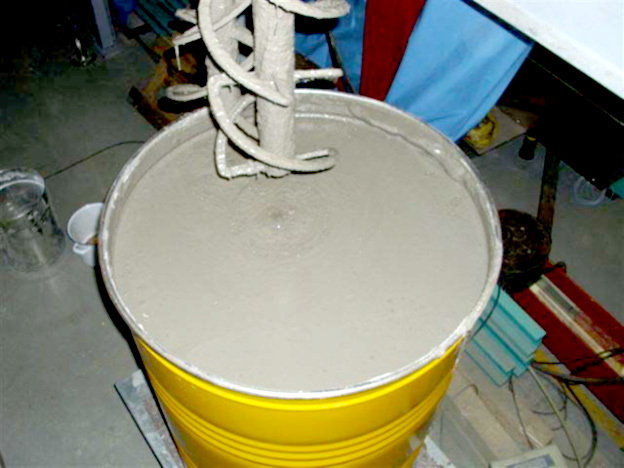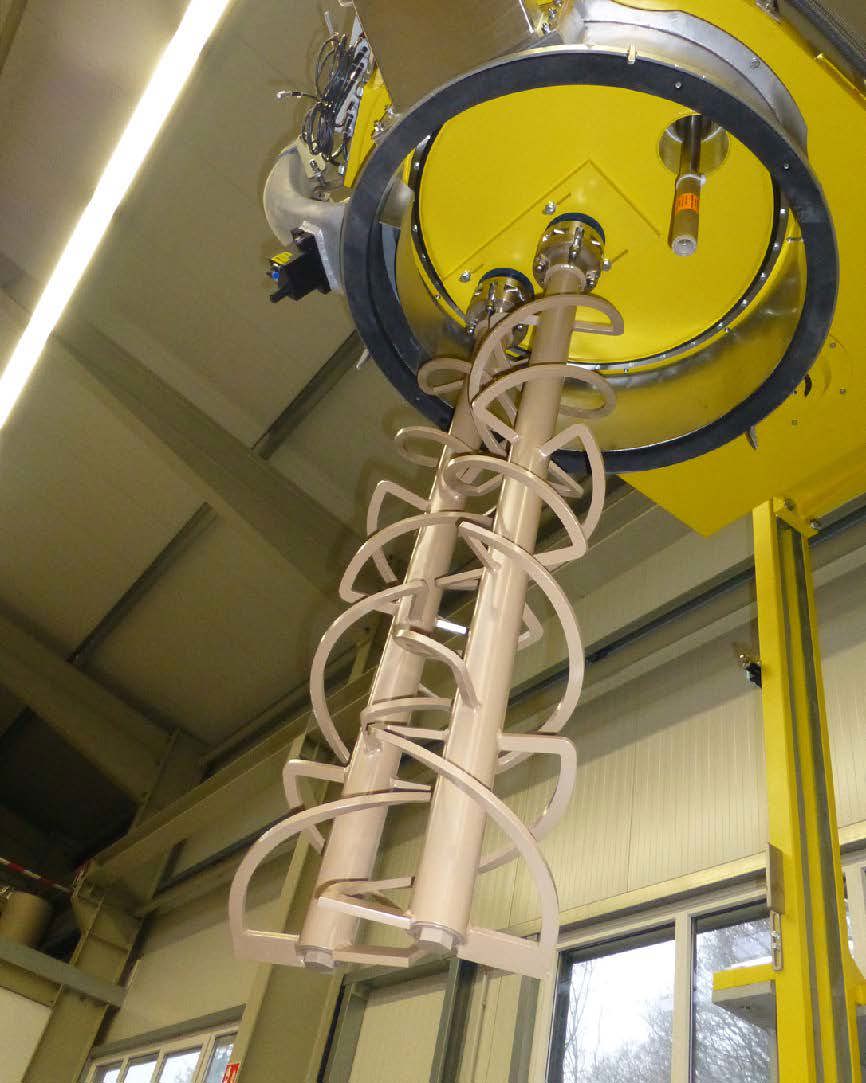Background
If radioactive liquid or solid waste needs to be converted into a product suitable for final storage, cementation is one of the methods commonly used. Cement is readily available and inexpensive for use in solidifying liquid or wet solid waste, and also for encapsulating solid waste generated during operation of a power plant as decontamination and decommissioning waste and legacy waste. Using cement for immobilizing radioactive waste offers a wide range of possibilities for optimizing the properties of the final end product. Recipes for the end product can be tailor-made to suit particular waste streams – from the highest possible compression strength to the maximum amount of waste at a certain level strength – combined with low leachability.
Westinghouse provides a variety of options for cementation systems. One method using an in-drum mixer is a proven solidification process for radioactive wastes used throughout the world in the nuclear industry. Westinghouse has engineered this process to new levels, resulting in fast and easy-to-clean components that reduce preparation time and increase operational efficiencies.
Another proven system is cementation with a reusable blade. Thereby, no additional waste and consumables are needed. Westinghouse also has innovated a solution to increase the cleaning efficiency of the mixer blades. A mobile solution is also possible based upon the proven Westinghouse-owned mobile solidification system (MOSS) design and our experience in cementation technology from recent multiple cementation facilities.

Cemented drum
Description
In the cementation process, the waste, water and additives are dosed from a tank into the drum at the waste loading station. Then, the waste-loaded drum is transferred to the in-drum mixer, where cement is added and mixed with the waste. By adding cement to the filled drum, low water/ cement ratios (less than 0.35) are possible.
The cementation process using the in-drum mixer takes approximately 60 minutes (excluding drum handling). Because mixing is done in-drum, there is no chance of a lost stirrer. Dosing of the liquid and solid components is separate and a special mixer coating provides for better cleaning.
With cementation the waste activity is halved due to the volume increase. Average waste loads for a 400 liter (L) drum to achieve a compression strength greater than 15 MPa are:
- 100 kg of dewatered spent resins (highly borated)
- 220 kg of evaporator concentrate
A 200 L drum also can be used. An optional cement supply system and an optional heating system are available.



